Parks and Green Areas in Madrid

What would be Madrid without its green areas that offer some recovering and leisure activities? It would be probably a not a liveable city, as the numerous gardens and park complexes are oftenly visited by the active Madrileneans. In the following, I will list a selection of some of the green oasis of Madrid of which one should have visited at least the Retiro and the Parque de Oeste.
Parque del Buen Retiro
The Parque del Buen Retiro is located at the subway stations Retiro (L2), Ibiza (L9) or Atocha (L1) - it is also called simply Retiro (retiro = retirement) and is one of the most popular park complexes of Madrid. No matter if used for inline skating, for having a picknick, reading, relaxing or even getting married - for many people, the Retiro is an ideal place.
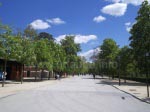
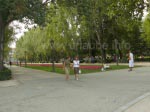

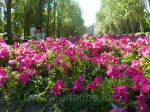
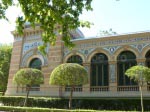
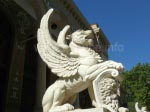
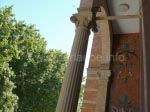
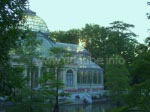
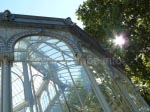
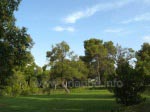

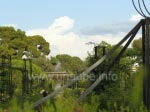
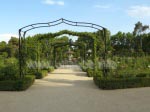
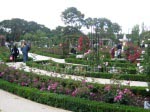
Built approximately in the year 1632, the Retiro belonged to the royal park complexes of Felipe IV; but they were nearly destroyed during the independency war with the French. In the middle of the 19th century, the park became accessible to the public and therefore it was beautified and rearranged.
In the Retiro, the wide boulevards are characteristical and they are used for sports activities and where the feria de libros (book fair) takes place; As typical for the Retiro is the lake that is arranged there, the Estanque del Retiro, in which ducks and small paddle boats cavort. In the background there is the horsemen monument of the King Alfonso XII that is a popular place to stay of the visitors and young people, specially on sunny days.
Close to the lake, there are prognosticators and artists increasingly visible who hope to get the attention of the people. From time to time there are also some ice sellers competing with the small cafés and bars in the Retiro.
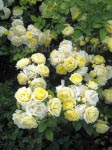
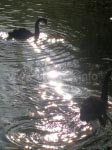
From the different fountains and monuments, one thing is outstanding: The Àngel Caído (fallen angel), also known as Lucifer. Surrounded by a font, the monument rises up; by having a closer look, one can see the hurt facial expression and the falling position of the body that is bonded by snakes and falls in this moment from heaven to hell. This monument is also visible in the Real Academia de Bellas Artes de San Fernando zu sehen and therewith, it represents one of the few artworks that represent the devil.
The Retiro accommodates, amongst others,the palaces Palacio de Velázquez and Palacio de Cristal. In both buildings there are sometimes some temporary exhibitions that can be viewed. The dreamy rosegargen of the retiro is specially beautiful: the most different types of roses and elements of arrangement adorn the small and separated area.
Parque de Oeste
Between the Barrio de Argüelles and the train line that runs from the main station of the subway station Príncipe Pio (L6, L10), there is one of the oldest park complexes of Madrid: the Parque de Oeste (west park). Its building already begun in the year 1893; 12 years after that it was officially inaugurated.
A characteristical thing of the Parque de Oeste is its nature that dominates despite of the planted flower beds and dapper lawns - a "reflection of its own nature", as it is expressed in a sign that is positioned in the park.



Many Madrileneans and visitors appreciate the park that invites to jog, having a walk and relaxing. Despite of the proximity to the university campus and to the business district of Madrid, the Parque Oeste offers a lot of possibilities to have a break: latest at the time when one sits on a bench and listens to the chirping birds, one forgets the stress.
Interestingly, there are different levels in the park: the lawns and highly grew pines are at a higher level than the forest track. This arrangement makes the park appear smaller than it is.

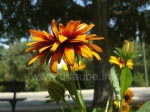
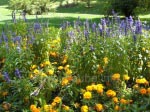
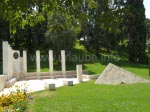
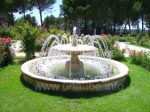
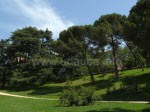
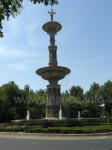
Originally, the Parque de Oeste had a surface of approximately 37 hectares; but between the years 1956 and 1973 it had been rebuilt and expanded into southern direction. Since then, the areas La Rosaleda, the Parque de la Tinaja and the Jardínes del Templo de Debod also belong to it.
The Templo de Debod is a characteristical but still curious building of Madrid. It is a small ancient Egyptian temple that was built by the King Merbe Adikhalamani more than 2000 years ago. How comes an ancient Egyptian is located in Madrid? THe temple that was dedicated to the divinities Anum and Isis, is a present of the Egypt goverment to Madrid as a gratitute for the suport of Spain in the year 1960. The employment of the Spanish archaeologists and engineers through the building of a dam at the bank of the Nile has saved a lot of art treasures of Egypt.
Since the year 1972, the Templo de Debod is located in the Parque de Oeste and is already worthwhile visiting only because its beautifully arranged environment. The temple itself shows some exhibits of Egypt, some walls that are artfully arranged with hieroglyphics as also a model of the former location of the temple in the upper floor.
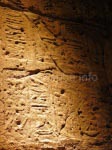
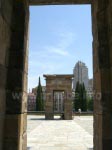
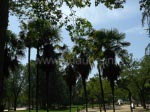

The place around the Templo de Debod is a beautiful place for enjoying the sunset. Many people come here together in order to picknick on the lawns, for talking to each other or for playing some music. Others are dedicated to the arts, as for example the Columbian Ignacio, who studies photopgraphy. The sunset and the temple are specially attractive at nights, he says; Everybody who sees the pictures will agree to that.
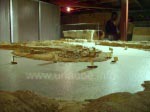


It is slowly getting dark; the crickets chirp. The illuminations of the fountin and the temple get visible - a wonderful opportunity to enjoy a bit of quietness before jumping into the nightlife of Madrid.
Casa de Campo
Those who loaf through the centre of Madrid and specially through the area of Gran Vía or Cuatro Caminos will hardly believe that despite of these huge crowds of people and heay traffic there is one spot in the city that is still untouched by all this.
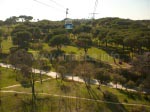
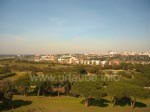
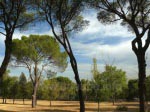
The Casa de Campo ("Rural house")is not a popular place of retirement for the Madrileneans for nothing: a perfect destination for an excursion and for relaxing, having a break or doing some sports. Despite of its popularity among the visitors it cn hppen that in the Casa de Campo, one hardly meets other people - with a surface of approximately 1700 hectares, the green area offers a lot of pssing places and hidden places. But nevertheless, the Casa de Campo is easy to reach over the subway stations Casa de Campo (L5), Lago (L10) or Batán (L10).
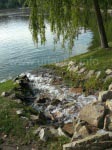
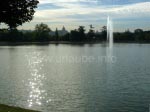
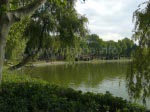
The partly wildly grown plants and dried grass are characteristical, which which the Casa de Campo is the opposite to the dapper Sabatini-Gardens; Nevertheless, the Casa de Campo apparently was one of the favourite places of Felipes II; Who liked to use this area that was located close to the palace for hunting.
Pines, poplars, sycamore trees, bushes and sometimes also flowers adorn the park that offers an unintentioned quietness: the traffic is nearly not hearable. The arranged lake is beautiful, where many times fishers do cavort. In the proximity, there are - as it is the case in almost all of the areas of Madrid and the surroundings - cofee bars.
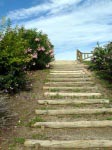
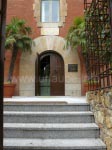

The Casa de Campo is specially appreciated by sportive poeple who like to come to this place to jog or to play football or basket ball. Sometimes, some sports activities and sport events are organized, where there are mainly a lot of young people and families.
The families will also apprecite the zoo that was founded in the year 1972 and that is absolutely recomendable for a short vacation with children, as it offers special attrctions in the park as pony rides and bot trips. Also the fun park that is located in the Casa de Campo will be enthusiasting: already from a distance, the big wheel of the park of the parque de atracciones gets visible; moreover, the park offers a ghost train and lot of different stands.
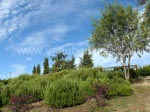
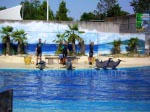
Tip: with the Teleférico, a kind of funicular, one can get to the Casa de Campo and enjoy the view to the Palacio Real, the Cathedral and the Plaza de España (starting point: subway Argüelles). One gets alongside some information in Spanish languge, a thing that one must not really understand; the wonderful view tells its own tale. Once arrived at the Casa de Campo, one can look for a nice place and unpack the picknick basket - but attention: depending on their mood, the birds and crows can be some clever thiefs.
Jardines de Sabatini
The Jardines de Sabatini, located right beside the Palacio Real close to the subway station Opera (L2, L5), are a perfect starting point in order to explore the surrounding of the Royal Palace . In the summer time, one should better get there in the morning, as during the noon sun, the shady places are scarce.
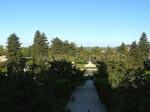
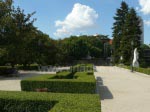
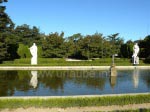
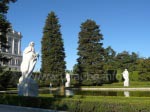
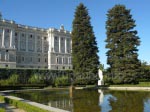
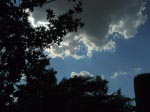
Also a visit in the evening is worthwhile; depending on the days, one can enjoy a classic concert during the summer months July and August, when the event programmes take place.
The Jardines de Sabatini that were built by the famous Italian arquitect Sabatini are connected through some up leading stairs with the Calle de Bailén, a thing that makes the place to appear a little isolated.
The cut bushes and plants, the water installations and the systematically arranged statues provide the Jardines the representativeness for a royal garden - nice to look at, but those who are looking for relaxation will probably not feel comfortable in this artificial amosphere.
Jardín Botánico
Close to the Retiro but still situated in the traffic chaos of the Paseo del Prado, there is a small oasis: the Jardín Botánico at the subway station Atocha (L1). It was already arranged around the year 1780 by Carlos III and continuously planted with different floras.
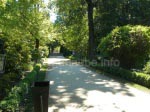
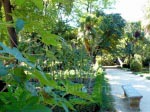
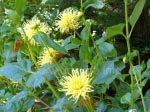
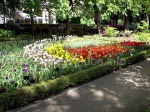


The botanical garden is a very recommendable stop in between during the walk on the Paseo del Prado. What makes the Jardín Botánico so unique? Compared to other park complexes, it is the only green area that shows a a small space a wide variety of plants and has such an arrangement: the small arranged paths transmit a certain protection and romance with the blossoming flowers as also rose gardens. A small path leads to a corner that has an atmosphere as a forest: there are trees, ferns and bushes visible and a small river flows amidst them. Despite of the fosterage and arranged plant areas, the whole of the plants appear very natural - the spitted image of a botanical garden.
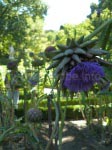
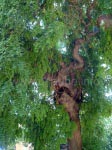
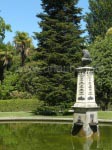
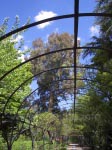
In the back part of the garden there is even a bonsai collection of the former president Felipe González and sometimes other kinds of plants exhibited. At the entrance, one gets a plan in order to get orientated in the garden and capture its structure. One can either follow the plan or leave it, as it is not obligatory.
With some small signs, the botanical garden informs about the plants, theis shapes of the leaves, allergies and medicinal benefits. But only a few people will understand the Spanish technical terms so that it is probably better just to enjoy the relaxing effect of the plants. Benches and seating areas invite to relax - a perfect opportunity before continuing to the Prado.
Campo del Moro
Right beside the Palacio Real there is the green area Campo del Moro ("Land or the moors"), that is very hidden despite of its size. The reason for this is the entrance portal that is a little isolatedand that is located in the street Paseo Virgen del Puerto and therewith still close, but outside the city centre. The best way to get to the Campo del Moro is with the subway station Príncipe Pío (L6, L10).

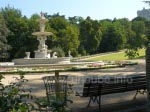
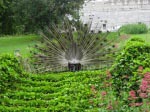
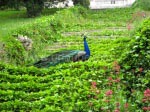
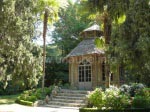
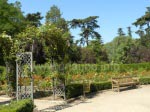
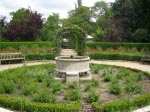
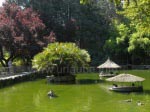
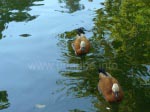
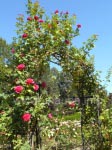
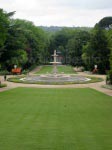
A visit is wortwhile in any case: for many people, the access is much too laborious, so that one indeed will meet some other visitors but there will be no crwods of people. The main attractions of the Campo del Moro are on one hand the carriage museum (Museo de Carruajes), but mainly the free peacocks with their beatiful and coloured plumes.
Beside the peacocks there are also many pigeons, ducks and birds visible that like to spend the time at the arranged lakes and water basins during the summer time.
By entering the complex, the visitors is greeted by an impressive view: the view to the Palacio Real wih a long extended lawn surface that appears as a green carpet. This first impression makes one guess that the Campo del Moro is similarly cultivated as the Jardínes Sabatini are. But this is only partly right: those who continue walking will see that the park mainly appears natural. Campo del Moro - a hidden beauty that belongs in any case to the visit of Madrid!
Parque Juan Carlos I
The Parque Juan Carlos I, named after the King Juan Carlos I, is a very big park complex that is located outside Madrid, close to the airport. It is located at the subway station Campo de las Naciones (L8), exit Avda. Capital de España Madrid, Via de Dublin.
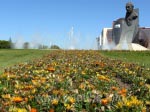
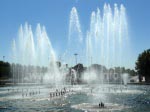
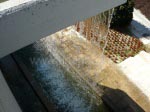
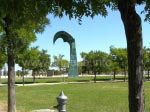
Mainly known by the Madrileneans, they take any opportinity to ride a bike and for other kinds of sports. But the park is also worthwhile visitng just to have a walk there, as only few tourists do visit it. And this is exactly what makes the park to be a popular destination for an excursion. The park has a water bed of a few kilometres length with water installations, countless green areas and art buildings. The park is adorned by an abundance of olive trees and plants.
From the view hills, one can recognize the motorway M40, the TV tower at the subway station O'Donnell and the "Little-Manhattan" of Madrid - he towers of Chamartín: the busy city seems to be far away but still close.






With its alleayways, the Parque Juan Carlos I is also a perfect destination also in the summer time in order to spend the day there and let one's mind wander. The infrastrucure offers, contrary to other parking areas, a lot of possibilities to get some water and also toilets. Moreover, the situation of the park has the advantage that oftenly, a slight and refreshing wind is blowing that makes the heat bearable.
Palacio de Cristal de Arganzuela
Plant lovers will surely like to go to the Paseo de la Chopera at the subway station Legazpi (L3): there is the Palacio de Cristal de Arganzuela, a greenhouse with tropical plants, cacti and flora from temperate zones.
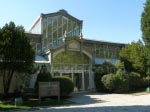
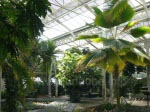
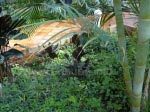
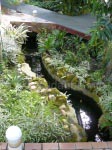
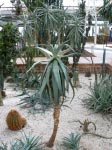
The big glass palace of the Palacio de Cristal de Arganzuela is subdivided into several individual green houses in which each different microclimates dominate. The different climatic conditions are the requirements for the ecosystems that are divided into tropical, subtropical and desert. In the green houses, there are different tropical plants, cacti and bushes from the temperate zones.
The glass place was built between 1908 and 1924 from the municipal arquitect Luis Bellido y González. Since the building and arrangement of the small green houses, the arrangement stagnated: at some parts, the place seems much too big and empty. But in each of the green houses there is a small, separated and nicely arranged flora.
Annotation: due to the sometimes chnging opening times it is recommendable to get previously informed at the tourist information center.

Back to the index Madrid
Author: Stefanie Kotulla; Copyright 2008-2008: Patrick Wagner, www.tourist-guide.biz
|